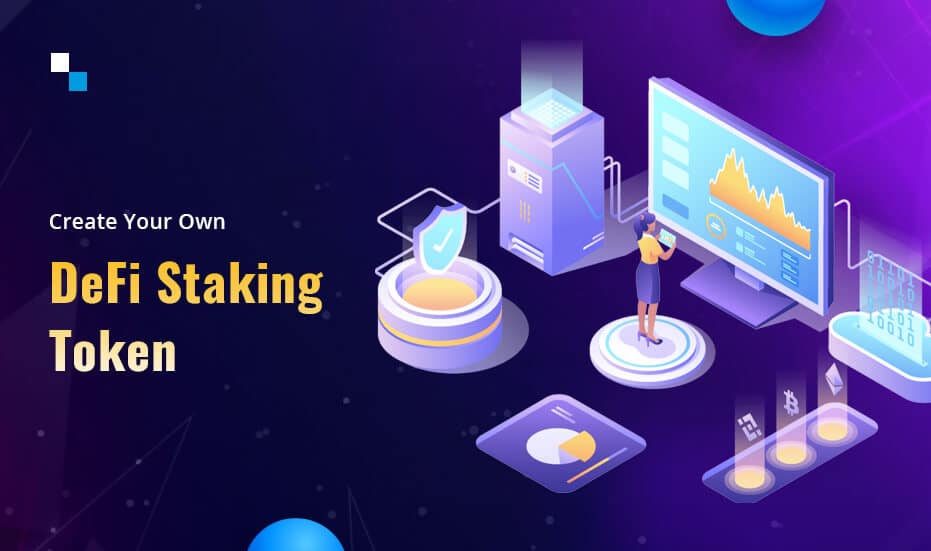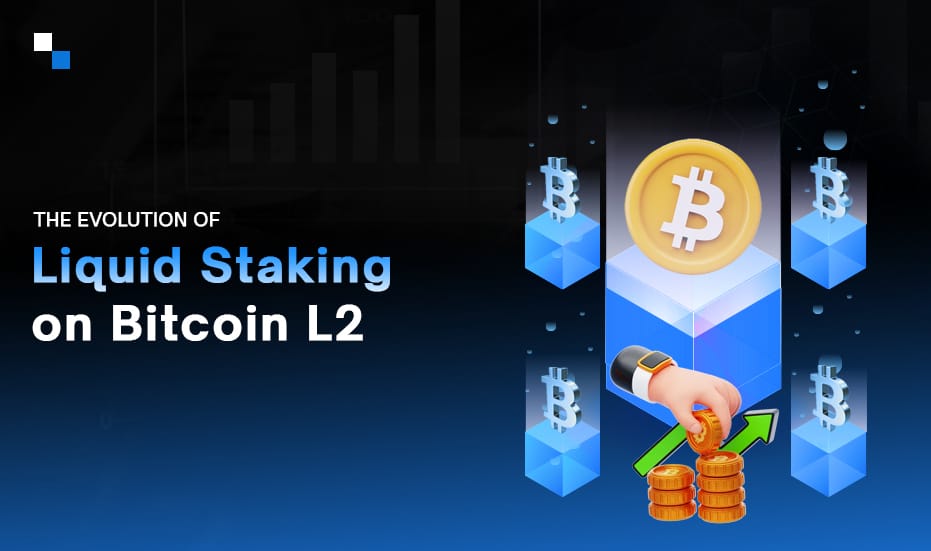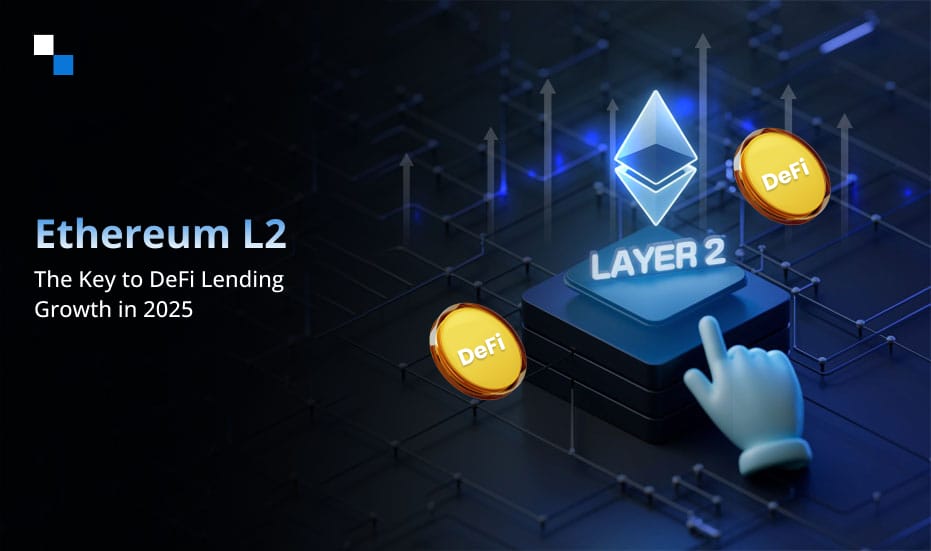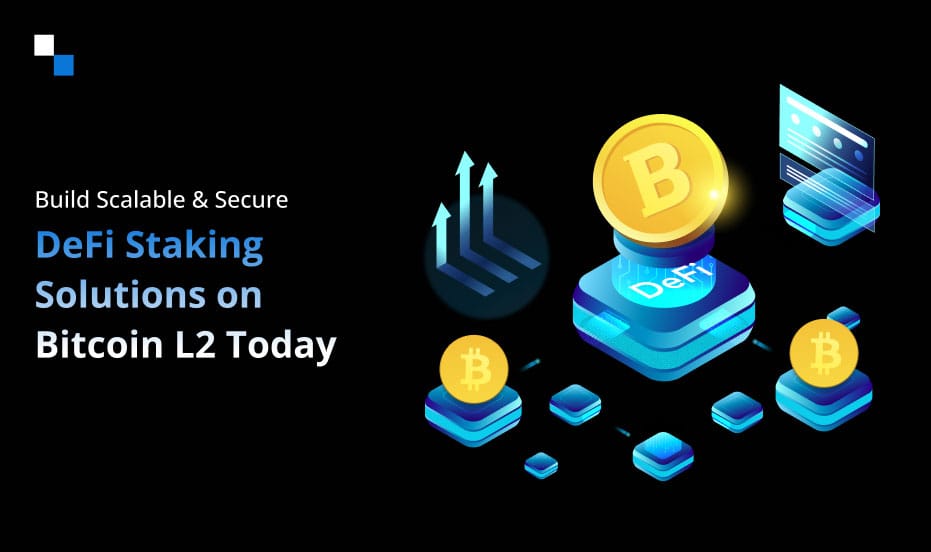
AI-Based Crypto Market Maker Bot: Step-by-step Development Guide
July 17, 2023
Top 10 P2P Lending Platforms of 2023
July 19, 2023Decentralized Finance (DeFi) has revolutionized the financial landscape, offering new opportunities for individuals to participate in open and transparent financial systems. One of the key aspects of DeFi is staking, where users can lock up their tokens to support network operations and earn rewards.
If you’re interested in creating a DeFi staking token, this comprehensive guide will walk you through the process step by step.
Define the Purpose and Tokenomics
Before diving into technical implementation, it’s crucial to define the purpose and tokenomics of your staking token. Determine the reason for creating the token and how it will provide value to stakeholders. Tokenomics refers to the economic system and mechanics surrounding your platform’s native token. It encompasses various aspects, including token supply, distribution, utility, and governance. Consider the following elements:
- Token Supply: In DeFi staking development, it’s crucial to determine the total token supply, whether it will be fixed or inflationary, and how new tokens will be minted or burned.
- Token Distribution: Plan how tokens will be distributed among participants. Consider a fair and transparent distribution mechanism, such as a public sale, airdrops, or rewards for specific actions.
- Token Utility: Define the utility of your token within the platform. Will it be used for purchasing raffle or lottery tickets, accessing exclusive features, or participating in governance decisions?
- Staking and Rewards: Decide if your token will incorporate staking functionality, allowing users to earn rewards for locking their tokens. Determine the staking rewards, the duration required, and any additional benefits for stakers.
- Governance: Consider if token holders will have governance rights, allowing them to vote on platform decisions, propose changes, or participate in community governance.
- Token Burning: Explore mechanisms to reduce token supply over time, such as token burning through transaction fees or buybacks, which can enhance scarcity and potentially increase token value.
Choose the Blockchain Platform
Selecting the appropriate blockchain platform for your staking token is a crucial decision. Consider factors such as security, scalability, community support, and smart contract capabilities. Each platform has its own advantages and disadvantages, so it’s important to choose one that is right for your needs. DeFi Staking Platform Development has gained immense popularity because of its many benefits.
Ethereum is the most popular blockchain platform for DeFi staking. It’s also the most secure platform, as it has been around for the longest time and has a large community of developers. However, Ethereum is also the most expensive platform, as gas fees can be high.
Binance Smart Chain is a newer blockchain platform that is specifically designed for DeFi applications. It’s much faster and cheaper than Ethereum, making it a good option for projects that need to scale quickly. However, Binance Smart Chain is not as secure as Ethereum, and it has a smaller community of developers.
Polygon is another newer blockchain platform that is designed for DeFi applications. It’s similar to Binance Smart Chain in that it’s faster and cheaper than Ethereum. However, Polygon is also more secure than Binance Smart Chain, and it has a larger community of developers.
Design the Smart Contract
Designing the smart contract for a DeFi staking token is a crucial step in creating a successful staking platform. The smart contract will govern the staking, rewards distribution, and overall functionality of the token. Here are some key aspects to consider when designing the smart contract:
- Staking Mechanism: Determine how users can stake their tokens and earn rewards. Implement functions that allow users to lock their tokens into the staking contract, specify the staking duration, and handle the locking and unlocking of tokens.
- Reward Calculation: Design a mechanism to calculate and distribute rewards to stakers. Consider factors such as the staking duration, the number of tokens staked, and the overall reward pool. Decide whether rewards will be distributed proportionally based on the staked amount or using a different distribution mechanism, such as a fixed percentage.
- Reward Distribution Frequency: Determine how frequently rewards will be distributed to stakers. It can be daily, weekly, or on a custom schedule.
- Governance Rights: Decide whether stakers will have governance rights within the platform. Implement functions that enable stakers to participate in voting or decision-making processes, such as proposing changes to the platform or participating in community governance. Define the rules and mechanisms for voting, including voting weights based on staked amounts.
- Vesting and Lock-Up Periods: If you want to introduce vesting periods or lock-up periods for staked tokens, design functions to handle these time-based restrictions. Determine the duration of the vesting or lock-up period and ensure that the contract enforces the restrictions accordingly.
- Slashing or Penalties: Consider implementing slashing mechanisms or penalties to discourage malicious behavior or non-compliance with the staking rules. Define the conditions under which slashing, or penalties may occur and the consequences for stakers who violate the rules. Implement mechanisms to handle penalties fairly and transparently.
Security and Auditing
Ensuring the security of your DeFi staking token is of utmost importance to protect user funds and maintain trust within the DeFi Staking Platform Development Services. Here are some key considerations for security and auditing when creating a DeFi staking token:
- Secure Contract Development: Utilize well-established coding standards, such as those provided by platforms like Solidity, and adhere to secure coding practices. Implement input validation and handle potential vulnerabilities, such as reentrancy attacks or integer overflows.
- External Security Audits: Engage external security experts or auditing firms to conduct a thorough security audit of your smart contract code. These auditors will perform comprehensive assessments, looking for potential vulnerabilities or weaknesses that may put the contract at risk.
- Penetration Testing: Perform penetration testing to identify any potential vulnerabilities in your smart contract and overall system architecture. This involves simulating attacks and attempting to exploit weaknesses in the system’s defenses. Penetration testing helps to uncover any potential vulnerabilities that could be exploited by malicious actors.
- Secure Access Control: Implement proper access control mechanisms to limit administrative functions to authorized personnel only. This helps prevent unauthorized changes to the contract’s logic or state that could compromise the security of the platform. Ensure that appropriate permissions and role-based access controls are in place.
- Compliance with Security Standards: Ensure compliance with established security standards for DeFi staking Development such as those defined by industry organizations like the Open Web Application Security Project (OWASP). Follow their guidelines and recommendations to minimize security risks and enhance the overall security posture of your DeFi staking token.

Test and Deploy
Before launching your staking token, it’s crucial to extensively test your smart contracts and conduct thorough testing for potential bugs or vulnerabilities. Test your token under different scenarios, including stress testing and edge cases. Once you are confident in the functionality and security of your token, deploy it on the chosen blockchain platform, ensuring proper integration with wallets and other DeFi platforms.
Communicate and Market
After deploying your staking token, effective communication and marketing are essential to gain traction and attract users. Clearly communicate the benefits and features of your DeFi staking Development token through various channels such as social media, forums, and partnerships with influencers and community members. Engage with potential users, address their concerns, and provide comprehensive documentation and tutorials to facilitate adoption.
Monitor and Upgrade
Once your staking token is live, it’s important to monitor its performance, user feedback, and market dynamics. Continuously evaluate the tokenomics, reward mechanisms, and overall functionality. Periodically assess the need for upgrades and improvements based on user feedback, emerging technologies, and market trends. Stay engaged with the community and remain responsive to maintain the trust and support of your users.
Final Words
In conclusion, creating a DeFi staking token involves a comprehensive process encompassing planning, design, development, testing, deployment, and ongoing monitoring. By carefully considering the purpose, tokenomics, blockchain platform, and implementing robust smart contracts, you can create a successful staking token that attracts users and contributes to the thriving DeFi ecosystem.
Looking for a reliable and experienced DeFi Staking Platform Development Company? Get in touch!



